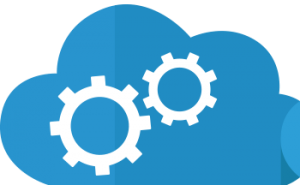 Technological tools dimensional that can create new experiences, showing intelligence levels not seen to date, and provide quick connection with new business ecosystems platforms are the three technology trends that Gartner identifies in its Hype Cycle for Emerging Technologies 2016 report.
Technological tools dimensional that can create new experiences, showing intelligence levels not seen to date, and provide quick connection with new business ecosystems platforms are the three technology trends that Gartner identifies in its Hype Cycle for Emerging Technologies 2016 report.
The three trends are better positioned to provide companies with competitive tools with which they will be able to address the digital innovation faster.
The Gartner report has deepened over two thousand technological proposals and is the most extensive compendium that makes the analyst around the annual cycle of expectation.
The report provides an overview of all the industries in which technologies and trends of both corporate strategists, leading R&D, entrepreneurs, large development companies and teams of technologists develop technologies when dealing in their portfolios of offerings in emerging technologies.
Emerging technologies
The Hype Cycle for Emerging Technologies at Gartner report stands out from other similar compendia by the fact that it is able to investigate in depth between more than two thousand technological proposals to draw a brief summary of the emerging technologies that will become essential resources and deep impact strategic planning of organizations, within the next ten years.
The Gartner report notes that to succeed in the digital economy, enterprise architects have to continue working in coordination with their CIO. They should be responsible decision-making with the aim of discovering proactively emerging technologies that are capable of transforming business models elements. The emerging technologies are going to provide competitive advantages in their respective markets while maximizing the value of its bid by reducing operating costs.
Lifecycle efficient management of the given enterprise
Gartner describes here the data classification techniques to store and easily retrieve business data. The emergence of powerful tools, with intuitive search systems in the basics of business data, enable better coordination between entities of a business and a better use of data.
Widespread virtualization
Widespread virtualization described control of the assets of the company software, including in many standards (OpenStack, OpenFlow, Open Rack, etc.) more interoperable. Control of a multitude of parts or hardware components under a unified software improves efficiency through interoperability.
The Machine Learning
Machine Learning technologies designate algorithms that allow a system to adapt its analysis and behavior, based on the analysis of empirical data from a database or sensors. These algorithms use statistical methods to learn the rules of operation based on the training data and then apply them to new data.
Micro data centers
Data centers include the equipment components of enterprise information system: mainframes, servers, storage, networking, and telecommunications equipment. Micro data centers have the particularity to exist on a much smaller scale than that which characterizes enterprise data centers.
Affective computing
Affective computing is the study and development of systems and devices with the capacity to recognize, express, synthesize and model human emotions. The inclusion of emotions expressed then used to adapt the operation of the equipment depending on the context.
Towards transparency
According to Gartner, the technology will continue to evolve towards people-centered models, to the point where a more transparent mode of communication between people, businesses, and things.
Intelligent machines will be the most disruptive technologies of the next decade, according to the analyst firm, because of its unprecedented computational potential handling huge volumes of data, and the unprecedented advances in neural networks that enable business solutions that nobody has offered to date.
Gartner has a related revolution platforms vision, in which emerging technologies are revolutionizing how concepts are defined, and their use are given. The change of mentality that represents moving from technical infrastructure to enabling platforms ecosystems bases underlying the creation of business models completely transformers, which will be able to build bridges between humans and technology.
 The cloud will take more and more space in IT spending and business needs in the matter will be complicated, opening the way to PaaS and IaaS. These are the conclusions that could be drawn from two studies published this summer by IDC and Gartner.
The cloud will take more and more space in IT spending and business needs in the matter will be complicated, opening the way to PaaS and IaaS. These are the conclusions that could be drawn from two studies published this summer by IDC and Gartner. DDoS or denial of service attack is an attempt to make the resources of a system unavailable to its users. Virtually all industries are susceptible to this type of attack. DDoS attacks are growing rapidly, and many countries are beginning to create legislation so that they are taken more seriously and treated as a real problem.
DDoS or denial of service attack is an attempt to make the resources of a system unavailable to its users. Virtually all industries are susceptible to this type of attack. DDoS attacks are growing rapidly, and many countries are beginning to create legislation so that they are taken more seriously and treated as a real problem.